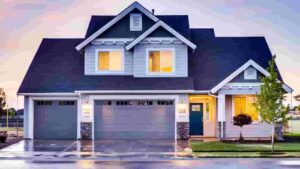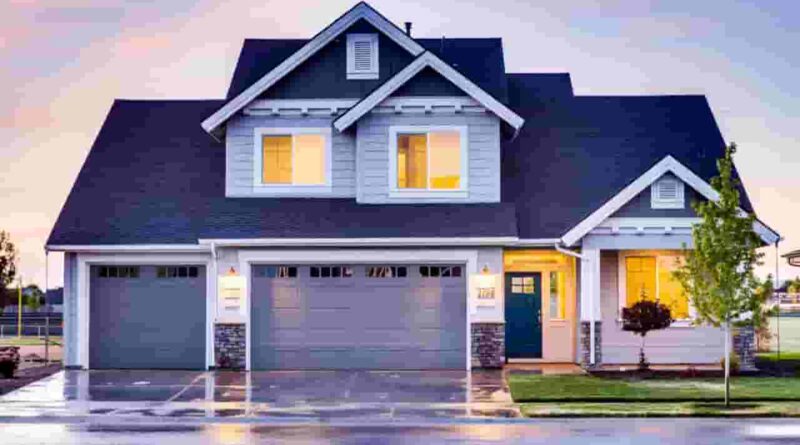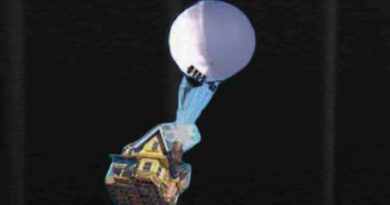Smart Home: Exclusive 10 New Advantages & Integration
Smart Home: Exclusive 10 New Advantages & Integration
smart home
Smart Home: The Future of Home Automation
Introduction:
Smart Home: The world is rapidly changing and with it, the way we live our lives. From the way we communicate with each other to the way we control our homes, technology is playing a significant role. One such technology is the smart home system, which is revolutionizing the way we interact with our homes. In this article, we’ll explore what smart homes are and how they are changing the way we live.
What is a Smart Home?
A smart home is a home equipped with technology that allows for remote control and automation of appliances and systems, such as lighting, heating, and security. The goal of a smart home is to make life easier and more convenient for the homeowner, by allowing them to control their home from anywhere and at any time.
Advantages of a Smart Home
One of the biggest advantages of a smart home is convenience. With a smart home system, you can control all of your devices and systems from a single app on your phone or tablet. This means that you can turn off the lights, adjust the temperature, or check on your security cameras, all from the comfort of your couch or even when you’re away from home.
Another advantage of a smart home is energy efficiency. By automating your home’s systems, you can ensure that your appliances and lights are only using energy when they’re needed. This can result in significant savings on your energy bill and reduce your carbon footprint.
Smart Home Security
Smart homes are also improving home security. With features such as remote-controlled locks, motion detectors, and smart cameras, homeowners can keep an eye on their property and protect it from intruders, even when they’re not at home.

Smart Home Integration
One of the best things about a smart home is its integration with other devices and systems. For example, you can set up your smart home to automatically turn off the lights when you leave the room or turn up the heating when you get home. This integration allows for a more seamless and intuitive experience, making life easier and more convenient.
Smart Home Devices: Making Life Even Easier
Smart Home Devices: With the rise of smart homes, there has been an increase in the number of devices and appliances that can be controlled and automated. These include smart thermostats, smart lighting systems, smart security cameras, smart locks, and smart appliances. These devices can be controlled through a central app or hub, making it easy to manage all of your home’s systems in one place.
Smart Home Entertainment: Smart homes are also changing the way we enjoy entertainment in our homes. With smart speakers, such as Amazon Alexa or Google Home, you can control your music, TV, and other entertainment systems with just your voice. This hands-free control makes it easier and more convenient to enjoy your favorite movies, music, and TV shows.
Smart Home Health and Wellness: The integration of technology into our homes is also improving our health and wellness. Smart fitness devices, such as smartwatches and activity trackers, can help us monitor our fitness levels and make healthier choices. Smart home systems can also improve our sleep quality by automating the lighting, temperature, and sound levels in our bedrooms.
Smart Home Safety: In addition to security, smart homes are also improving safety. Smart smoke detectors, carbon monoxide detectors, and water leak sensors can alert homeowners to potential dangers in their homes, giving them time to take action and prevent disasters.
Smart Home for the Elderly and People with Disabilities: Smart homes can also be beneficial for elderly people and those with disabilities. Features such as voice-controlled lights and appliances, automatic door locks, and fall detection sensors can make it easier and safer for them to live in their own homes.
Smart-Home Standards and Protocols
Smart Home Standards: With so many different smart-home devices and systems available, it’s important to have a standard or protocol in place to ensure compatibility and interoperability. Some of the most common standards and protocols for smart homes include Z-Wave, Zigbee, Wi-Fi, and Bluetooth. Each of these standards has its advantages and disadvantages, and it’s important to consider which one is best for your specific needs before making a purchase.
Smart Home Hubs: A smart-home hub is a central device that acts as the control center for your smart-home. The hub connects to all of your smart-home devices and allows you to control and automate them from one app or interface. Some popular smart-home hubs include Amazon Echo, Google Nest Hub, and Apple HomeKit.

Smart Home Integrators: In addition to smart-home hubs, there are also smart-home integrators that can help you set up and manage your smart-home. These integrators can help you choose the right devices, set up the software, and ensure that everything works seamlessly together. Some popular smart-home integrators include Control4, Savant, and Crestron.
Smart Home Security Concerns
Smart Home Security: While smart homes offer many benefits, there are also security concerns to consider. As with any connected device, there is always the risk of hacking and cyberattacks. To protect your smart-home, it’s important to use strong passwords, regularly update your software, and only buy devices from reputable manufacturers.
Smart Home Privacy: Privacy is another concern when it comes to smart homes. Many smart-home devices collect data about your home and your behavior, and it’s important to be aware of what data is being collected and how it’s being used. To protect your privacy, you can choose devices that have strong privacy policies, use encryption, and regularly delete the data collected by your smart home devices.
Smart Home Energy Efficiency
Smart Home Energy Management: One of the biggest benefits of smart-homes is their ability to help you save money on your energy bills. With smart-home devices, you can monitor and control your home’s energy use, making it easier to conserve energy and reduce your carbon footprint.
Smart Thermostats: Smart thermostats are one of the most popular smart-home devices for energy efficiency. These devices can automatically adjust the temperature based on your schedule and preferences, reducing energy waste and saving you money on your energy bills.
Smart Lighting Systems: Another popular smart-home device for energy efficiency is the smart lighting system. These systems allow you to control your lights from your phone or tablet, and can also be set to automatically turn off when you leave the room. This can help reduce energy waste and save you money on your energy bills.
Smart Appliances: Smart appliances, such as smart refrigerators and washing machines, can also help you conserve energy and save money. These appliances can be controlled and monitored from your phone or tablet and can be set to run during off-peak hours when energy is cheaper.
Smart Home Energy Generation: In addition to energy management, smart homes can also help you generate energy. With solar panels, wind turbines, and other renewable energy sources, you can generate clean energy and reduce your dependence on the grid.

Smart Home Automation
Smart-Home Automation: Automation is one of the most exciting and useful features of smart homes. With smart-home automation, you can control your devices and systems with just a few taps on your phone or voice commands to your smart speaker. This can help make your life easier, save you time, and add convenience to your daily routines.
Smart Home Routines: Smart-home routines allow you to automate multiple devices and actions at once. For example, you can create a routine that turns off your lights, lowers the blinds, and sets the temperature to your preferred level when you go to bed. With smart-home routines, you can streamline your daily routines and save time.
Smart Home Scenes: Smart-home scenes are similar to routines, but they are focused on specific events or situations. For example, you can create a scene that turns on your lights, starts your music, and adjusts the temperature when you come home from work. With smart-home scenes, you can customize your home to your specific needs and preferences.
Smart Home Voice Control: Voice control is a key feature of smart-homes, and it’s made possible by smart speakers like Amazon Echo and Google Nest. With voice control, you can control your smart-home devices and systems with just your voice, making it easier and more convenient to use.
Smart-Home Security
Smart Home Security:
Smart-homes are also making our homes safer and more secure. With smart home security systems, you can monitor and control your home from anywhere, giving you peace of mind and added protection for your family and belongings.
Smart Home Monitoring: Smart-home monitoring systems allow you to keep an eye on your home from your phone or tablet, and they can alert you if there is any unusual activity. These systems can also be linked to your local law enforcement, providing an added layer of protection in case of an emergency.
Smart Home Cameras: Smart-home cameras are a popular security solution, and they allow you to keep an eye on your home from anywhere. You can view live footage or recordings of your home, and many cameras also have built-in motion detection and night vision capabilities.
Smart Door Locks: Smart door locks provide an extra layer of security, and they allow you to control who has access to your home. You can unlock and lock your doors from your phone, and some locks also have keyless entry and automatic locking features.
Smart Home Alarms: Smart-home alarms provide an audible alert in case of an emergency, and they can be linked to your local law enforcement for added protection. These alarms can also be integrated with your other smart-home devices, providing a comprehensive security solution for your home.
Smart-Home Technology Overview
smart homes technology
Smart-home technology refers to the integration of internet-connected devices and automation systems in a residential environment to provide enhanced comfort, convenience, and security. The goal of smart-home technology is to make the daily tasks of running a household easier and more efficient through the use of smart devices and home automation systems.
Examples of smart home technology include:
Smart lighting: Lights that can be controlled remotely, through voice commands, or according to a pre-programmed schedule.
Smart thermostats: Thermostats that can be controlled remotely, through voice commands, or according to a pre-programmed schedule.
Smart security systems: Security systems that can be monitored and controlled remotely, through an app, or voice commands.
Smart home entertainment systems: Entertainment systems that can be controlled remotely, through voice commands, or according to a pre-programmed schedule.
Smart appliances: Appliances that can be controlled remotely, through voice commands, or according to a pre-programmed schedule.
Smart-home technology is becoming increasingly popular as people seek more convenient and efficient ways to manage their homes. The technology can be controlled through a smartphone app, a smart-home hub, or voice commands using a digital assistant such as Amazon Alexa or Google Assistant.
Here are a few more examples of smart-home technology:
Smart locks: Electronic locks that can be controlled remotely, through voice commands, or according to a pre-programmed schedule.
Smart cameras: Internet-connected cameras that can be used for home security and monitored remotely.
Smart smoke detectors: Smoke detectors can send alerts to your smartphone and can be interconnected with other smart-home devices to automatically turn on lights and sound an alarm.
Smart blinds and shades: Blinds and shades that can be controlled remotely, through voice commands, or according to a pre-programmed schedule.
Smart sprinkler systems: Sprinkler systems that can be controlled remotely, through voice commands, or according to a pre-programmed schedule to conserve water and optimize watering for plants.
Smart power strips: Power strips that can be controlled remotely, through voice commands, or according to a pre-programmed schedule to help manage energy usage.
The possibilities for smart-home technology are virtually limitless, and innovations and devices are being developed all the time. The goal of smart-home technology is to make life easier, more convenient, and more efficient, and it has the potential to transform the way we live in our homes.
Smart-Home Technology Trends
smart home technology in the future:
The future of smart-home technology is expected to bring several exciting advancements and new capabilities. Here are some of the key trends and developments that we can expect to see in the coming years:
Increased Automation: Smart homes will become even smarter, with devices and systems that are capable of communicating with each other and making decisions without human intervention. For example, smart lighting systems may automatically adjust the brightness and color temperature based on the time of day, while smart thermostats may learn your schedule and adjust the temperature accordingly.
Improved Security: Smart homes will continue to incorporate advanced security features, such as facial recognition and biometric authentication, to keep you and your family safe. In addition, there will likely be more focus on using smart devices to prevent break-ins and monitor your home for potential security threats.
More Integration: As more and more devices become connected, it will become easier to integrate them into a single, seamless smart-home system. For example, you may be able to control all of your smart devices from a single app or use voice commands to control everything in your home.
Greater Energy Efficiency: Smart homes will become even more energy efficient, with systems that can learn your habits and adjust your usage accordingly. For example, smart appliances may be able to predict when you’ll need to use them, and adjust their energy usage accordingly.
Expansion into New Areas: The smart-home technology of the future is likely to expand into new areas, such as health and wellness, transportation, and entertainment. For example, we may see the development of smart-home systems that can monitor your health, provide exercise guidance, or even drive your car for you.
These are just a few of the many exciting developments that we can expect to see in the future of smart-home technology. As technology continues to evolve, we’ll likely see even more amazing advancements and capabilities in the years to come.
Artificial Intelligence: AI will play a major role in the future of smart-homes, allowing devices to make more informed decisions, respond more quickly to changing conditions, and provide more personalized experiences. For example, AI-powered virtual assistants will become even more advanced, able to understand natural language commands and make recommendations based on your preferences.
Virtual and Augmented Reality: Virtual and augmented reality will become more common in the home, providing new ways to interact with your smart devices and systems. For example, you may be able to use VR to explore and control your home from a remote location or use AR to view information about your devices overlaid in the real world.
Improved Interoperability: As the number of smart devices continues to grow, there will be a greater need for them to work together seamlessly. This will lead to the development of more interoperable standards and protocols, making it easier to connect devices from different manufacturers.
Greater Emphasis on Privacy: As smart-home technology becomes more widespread, there will be an increasing focus on privacy and security. This will drive the development of new technologies and protocols designed to protect your data and ensure that your home remains secure.
Sustainable Energy: Smart-homes will play an increasingly important role in reducing energy consumption and promoting sustainable living. For example, smart-homes will be able to generate and store their energy, allowing you to reduce your dependence on the grid and live more sustainably.
These are just a few of the many exciting developments that we can expect to see in the future of smart-home technology. The field is constantly evolving, and we’ll likely see many more amazing advancements in the years to come.




